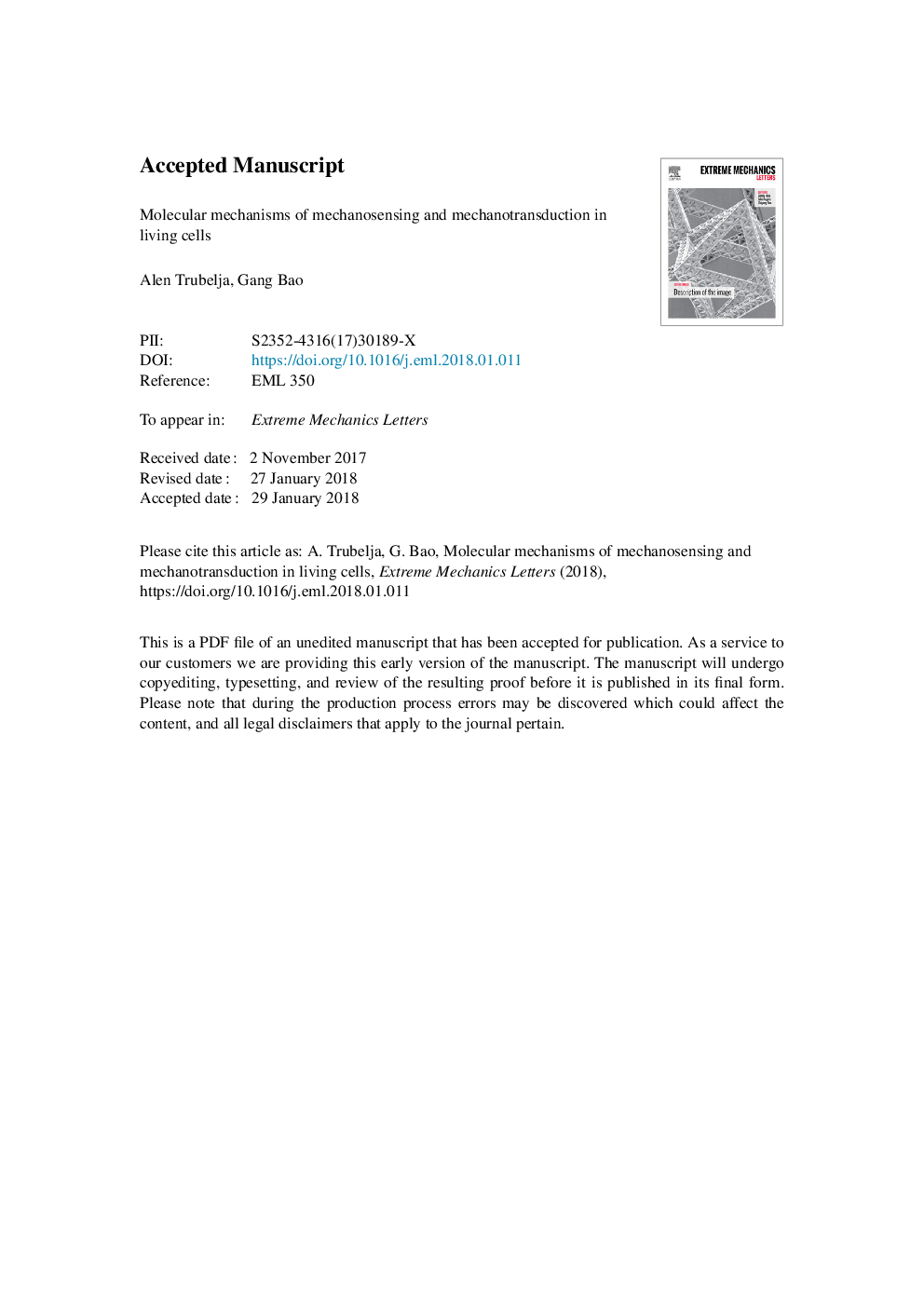| Article ID | Journal | Published Year | Pages | File Type |
|---|---|---|---|---|
| 7170691 | Extreme Mechanics Letters | 2018 | 20 Pages |
Abstract
Living cells can sense mechanical forces or deformation, and convert them into biological responses. However, although many details of mechanical, chemical and biological interactions in cells have emerged over the past few decades, the exact molecular mechanisms of mechanosensing and mechanotransduction remain elusive. This review examines some possible molecular mechanisms responsible for sensing and transducing mechanical signals by living cells, and the tools developed for making molecular-level mechanical measurements. The opportunities and challenges in further developing molecular mechanobiology are discussed.
Related Topics
Physical Sciences and Engineering
Energy
Energy Engineering and Power Technology
Authors
Alen Trubelja, Gang Bao,
